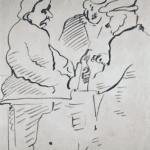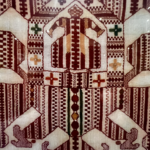Born in Gatchina to Tsar Paul I and Maria Fedorovna, Nicholas came to power amidst the turmoil and gunshots of a coup staged in St. Petersburg in December 14, 1825. The Decembrist uprising, as it became known, was organized by a secret society of freethinking young nobles desperate for political freedoms. Nicholas I harshly repressed the coup, hanging five of its leaders and exiling many conspirators to Siberia.
The trauma of the Decembrist uprising haunted the young Emperor, reviving his father’s fear of Western influences and love of military discipline. More discipline, rather than more liberty, was to become the remedy for Russia’s ills. Queen Victoria thus described Nicholas in a letter of 1844 to the Belgian king, “He is stern and severe – with fixed principles of duty which nothing on earth will make him change. He is bald now, but in his chevalier Garde uniform he is magnificent still, and very striking.”
It was during the reign of Nicholas I that the famous motto “Orthodoxy, Autocracy and Nation” was devised. Faith, loyalty to the tsar and respect for the nation’s traditions were to become the three pillars of the state. Even the court dress code was changed to conform to the Russian tradition. Until the 1917 revolution, a Russian court lady-in-waiting wore an embroidered velvet overdress with long, open sleeves in the Muscovite style and a diadem-like Kokoshnik.





You must be logged in to post a comment.